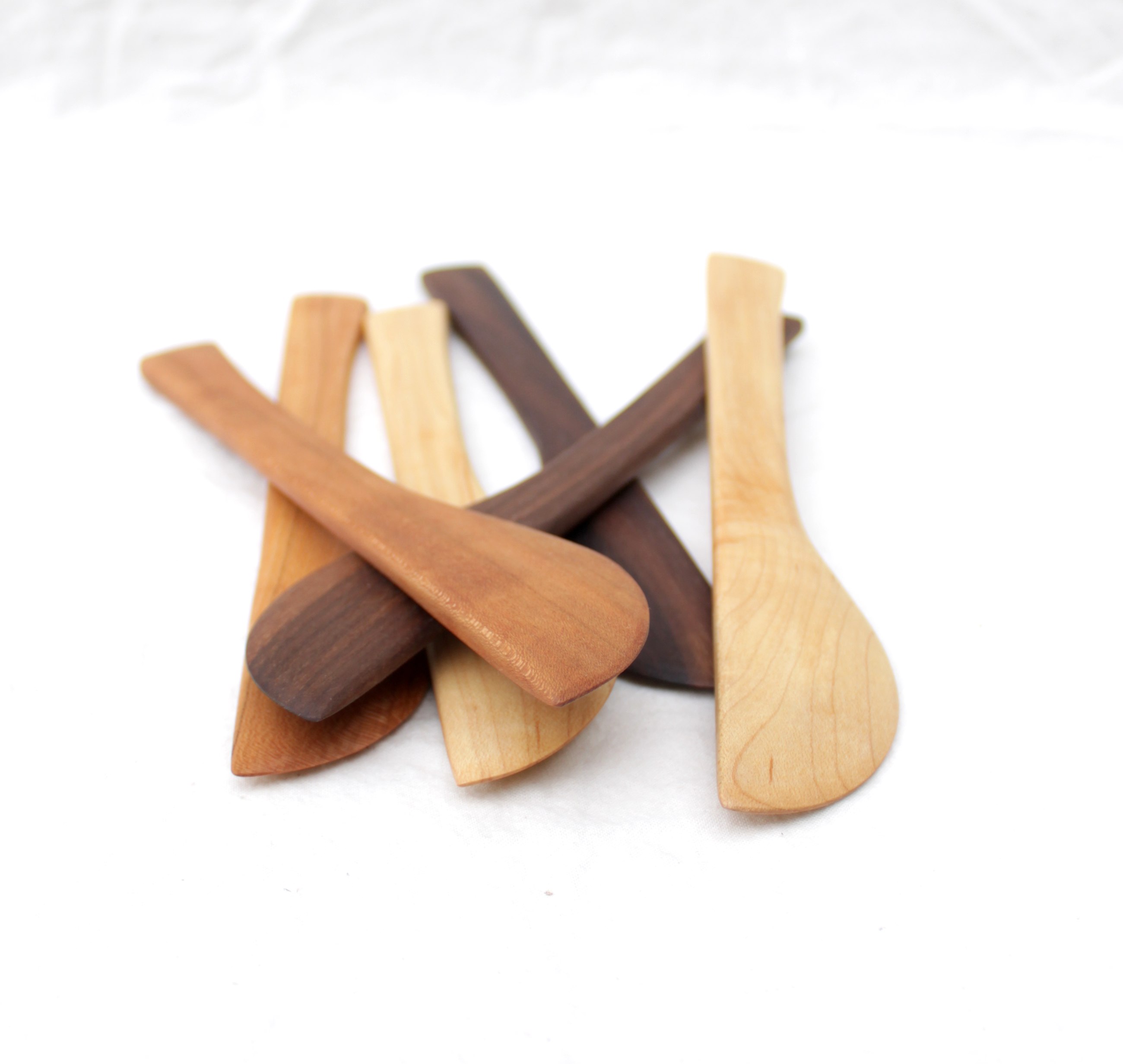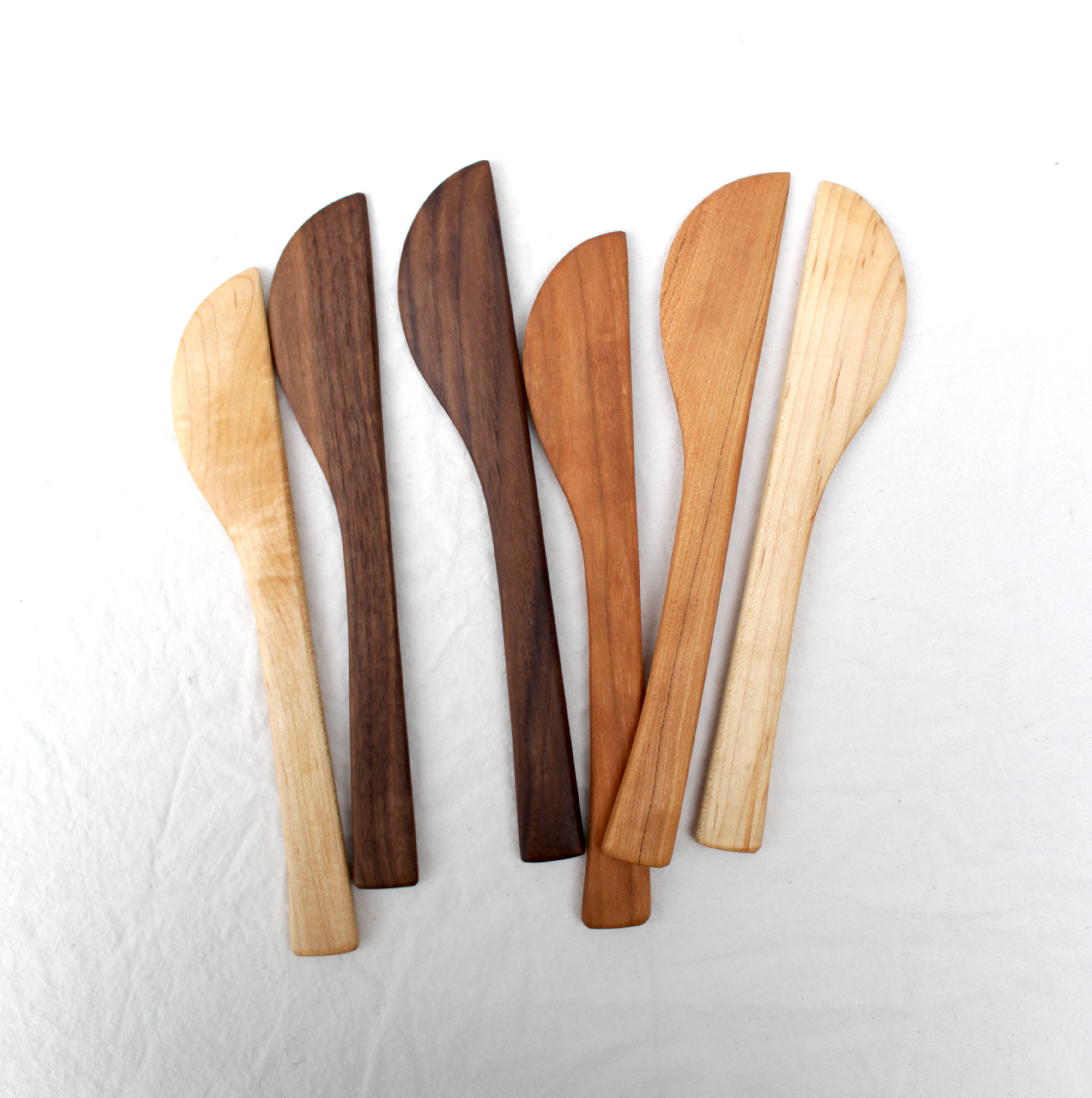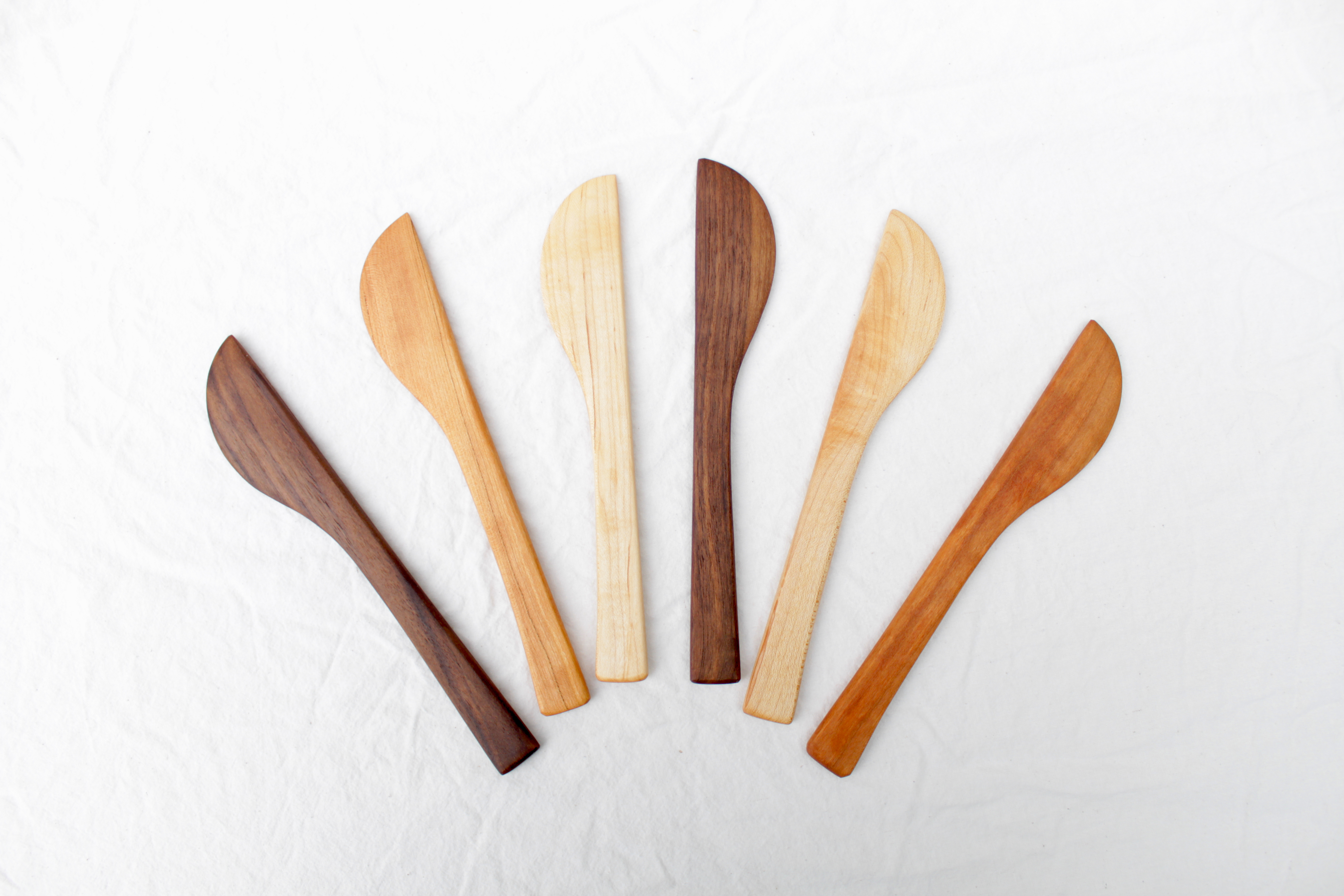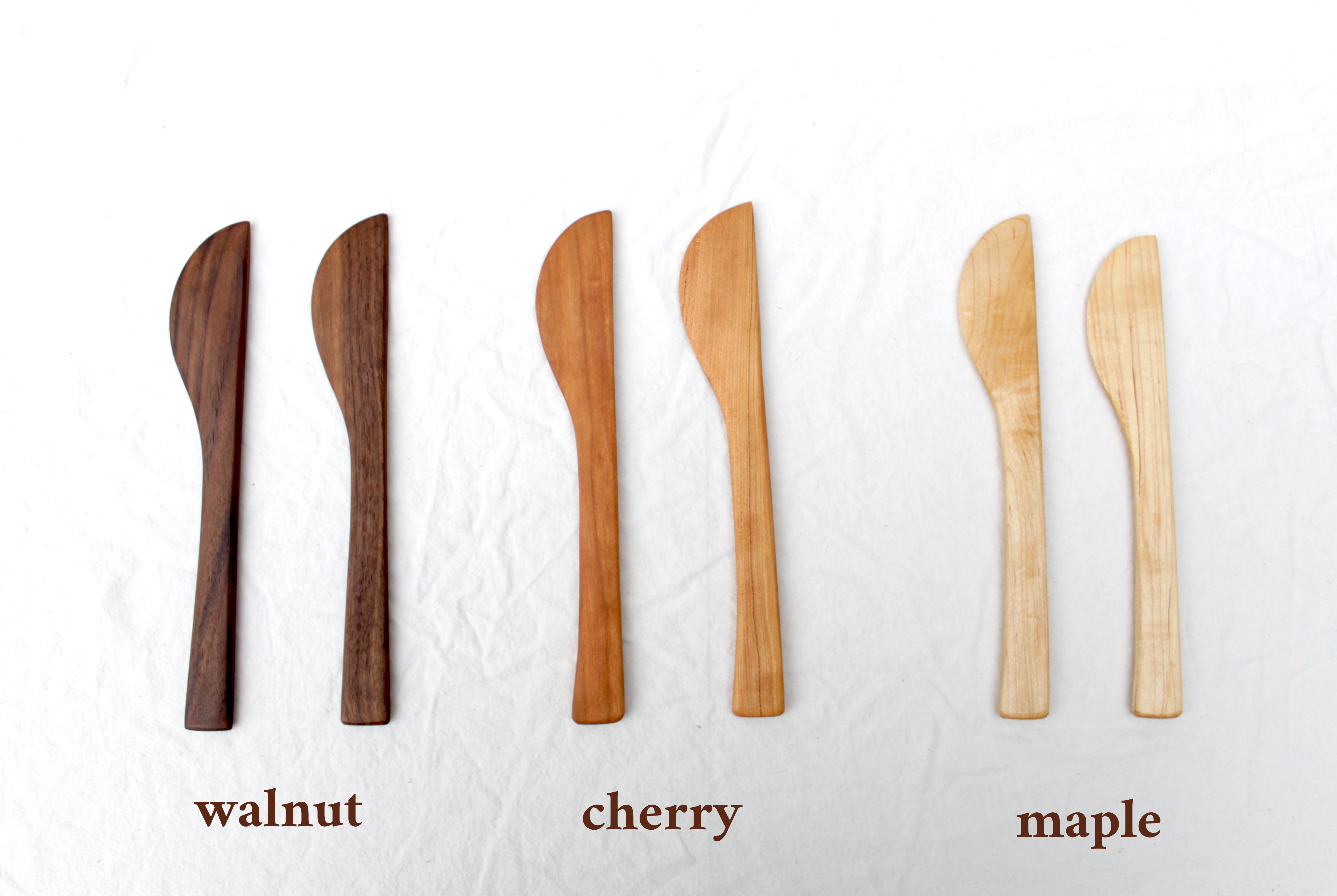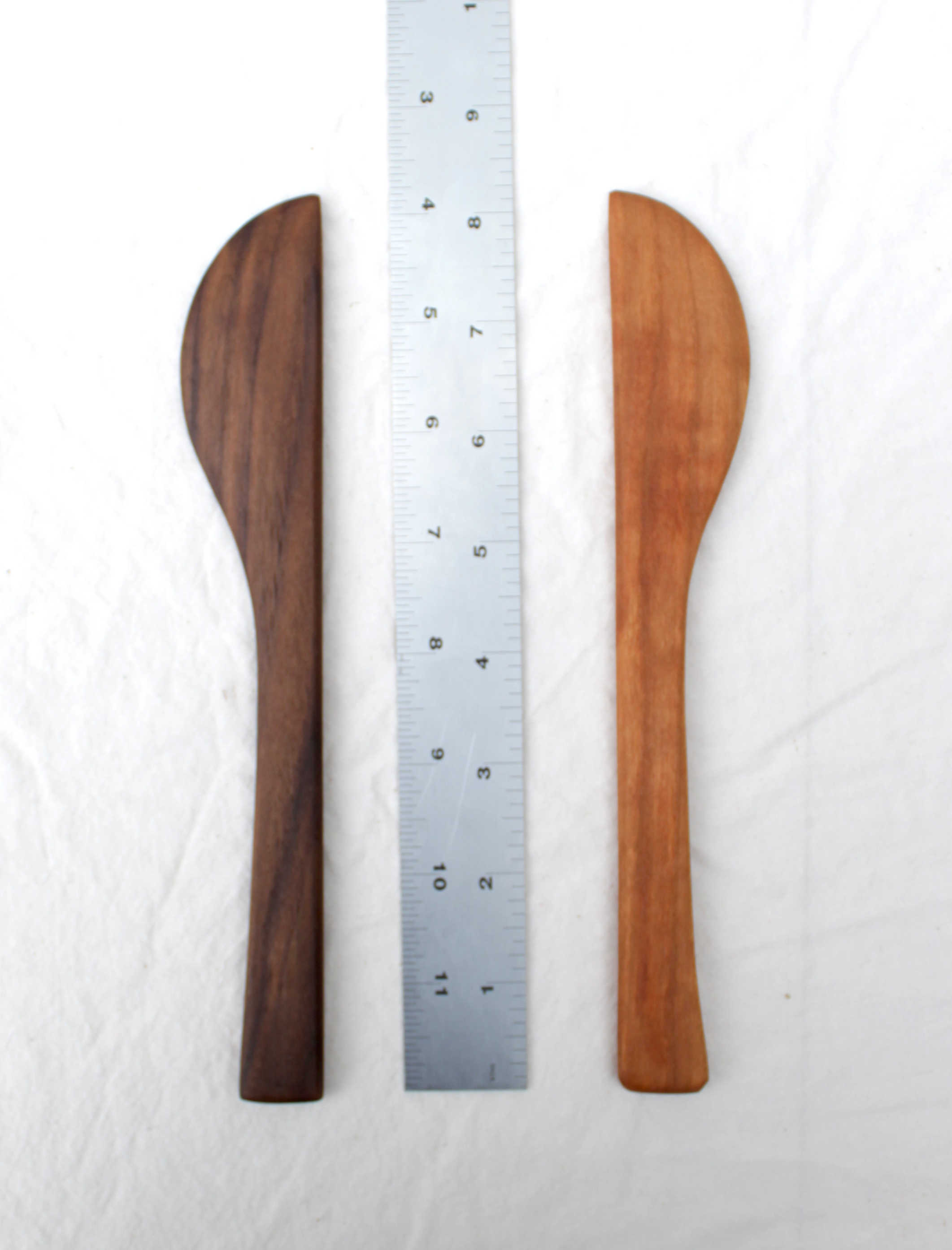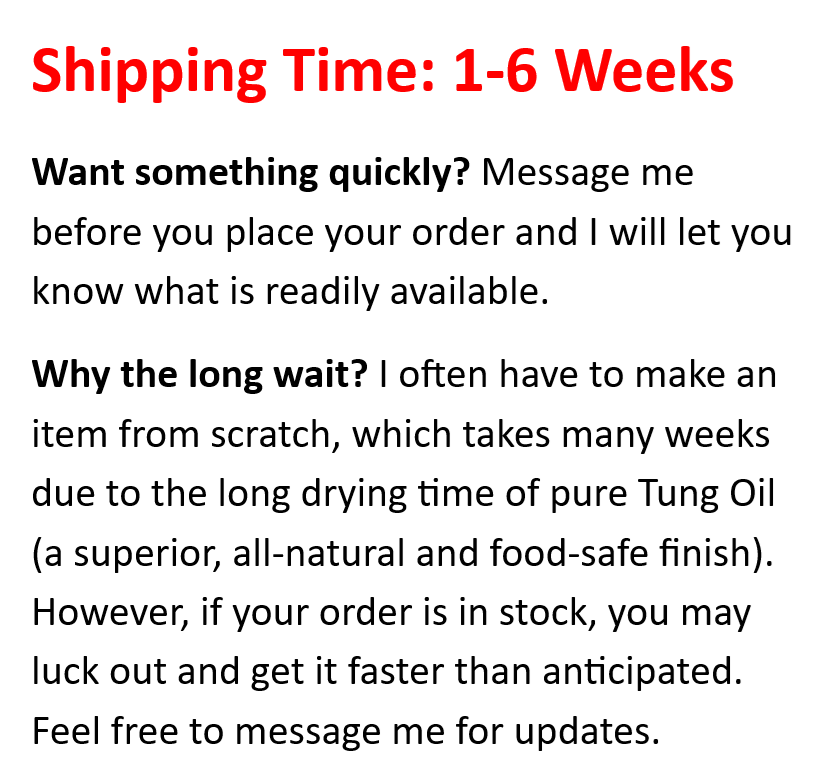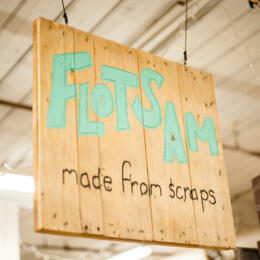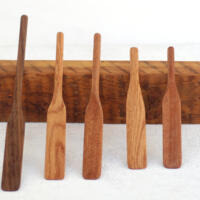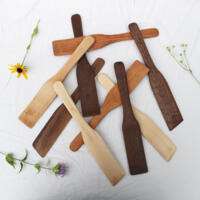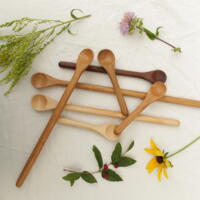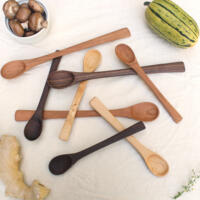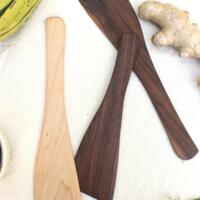About this Product
Whether you want an elegant addition to your charcuterie board or a sturdy addition to your baking or crafting supplies, you will find many uses for this little tool. Keep it around the kitchen to ice the perfect cake, or use it to make peanut butter and jelly sandwiches. When guests arrive, it makes a lovely butter knife and cheese spreader. It can also compliment your craft supplies as a soap beveler or clay cutter. Kids love using them too! Sanded smooth and coated with pure tung oil and citrus, followed by a coat of beeswax and mineral oil for a durable and food-safe finish.
Each spreader measures about 8" long and 1/4" thick, narrowing down to a smooth, sharp edge at the blade.
Flotsam
Meet the Maker
Flotsam was born from a desire to create something from furniture found on the streets of Boston, destined for the landfill. The wood I use in all my projects is "sourced" from the sidewalk, construction/demolition leftovers, woodworking shop scraps, and friendly neighbors. Handling scrap wood brings a host of new problems to solve, which adds a fun, creative energy to the artistic process of woodworking. In the shop, I use a mix of traditional and modern woodworking methods, taking pride in hand-cut dovetails while still appreciating the utility of modern tools. Most of what I know about woodworkig comes from my father in Virginia, who continues to teach me the value of hand tools, precision and and a well-sharpened blade. I work out of a shared shop in Boston, MA.
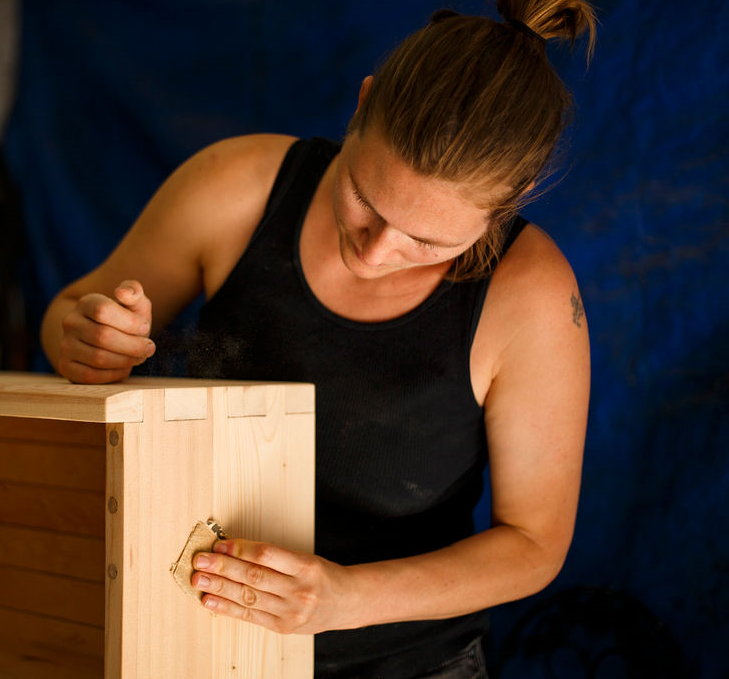
How it’s Made
SOURCING & PRODUCTION PROCESS
I take pride in producing beautiful, well crafted items from salvaged wood. Much of my wood comes from other woodworking shops - scraps from large projects that would otherwise be discarded. I also use construction and demolition scraps, broken furniture and anything else made of good, solid hardwood that needs a second chance at life. After I source the wood, I must deconstruct it and/or bring each piece down to a manageable size, then I cut and shape each piece individually. The production process is a dance between the planer, table saw, bandsaw and an array of different sanding tools.
THE FINISHING PROCESS
My final step on all utensils is a multi-day process of sanding, raising the grain, and applying food-safe oils and waxes for a smooth and long-lasting finish. I start with tung oil and citrus, which creates a durable, all-natural and food-safe coating, then I let it dry for at least a week. Before delivery, I finely sand the hardened finish and add a coat of beeswax and mineral oil for an extra layer of protection and a lovely smooth sheen.
Notes on Tung oil: Although Tung oil is pressed from the seed of the Tung tree, it is not known to be associated with common nut allergies. Unlike most other natural oils, it becomes a hard film and will not go rancid over time. However, it takes weeks to completely harden, depending on the temperature and humidity. Because of this, you may notice a lingering musty smell when you first take it out of the package. Don't worry, after a gentle wash and a few uses the smell should totally go away. If you prefer to skip the Tung Oil and opt for a simple beeswax and mineral oil finish, please message me and ask (this is a less durable option, but more commonly used because it is less expensive and generally simpler).
Shop Policies
I accept returns and exchanges within 30 days of purchase. Please let me know if you have any issues with my products!
